Plan for Seasonal Work Zone Shutdown
BY AsphaltPro Staff
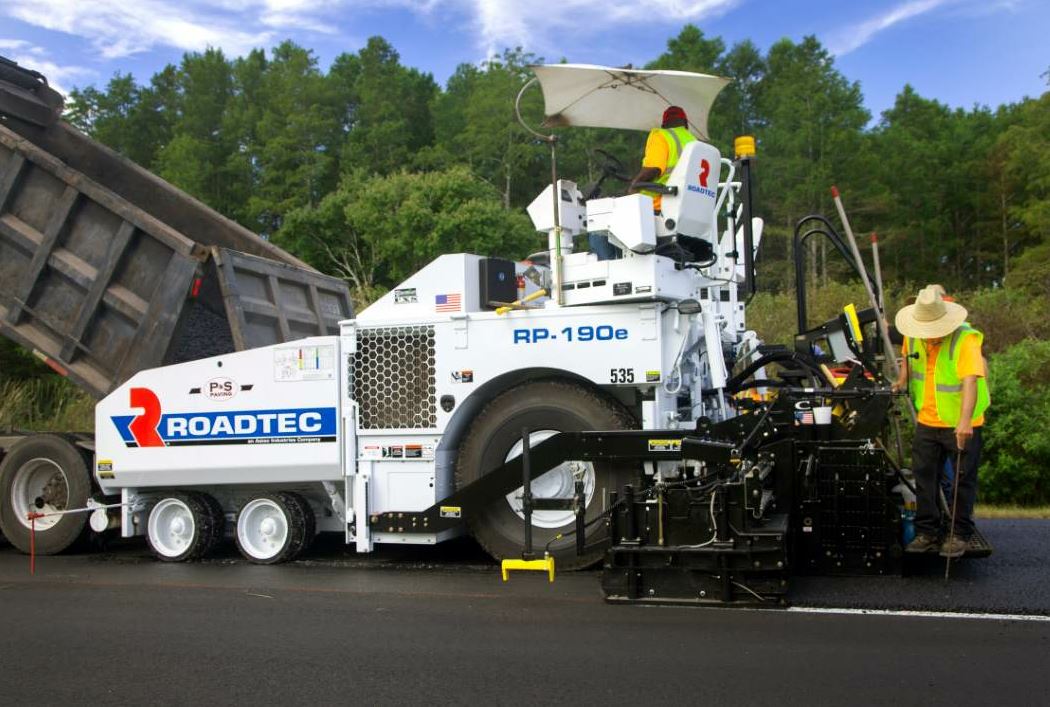
As asphalt contractors clean, repair and store paving and pavement maintenance equipment for the offseason, it’s time to make hard decisions. The workhorses of your fleet may be ready to retire, forcing you to take a long look at financing options for a new or used paver, etc. Maybe you know your trusty sweeper has 500 more hours in it and merely needs a new core for the broom. Order up!
A number of original equipment manufacturers (OEMs) responded to our call for information to give you a shopping list this month. But we also have some important information regarding the most prevalent piece of equipment out there: the skid steer. You see these busy machines scooting around piles of dirt, spilled mix, scrap and millings all day long, but do you know the most efficient way to maintain their tracks and treads?
Tracks and pneumatic tires represent a significant percentage of total cost of ownership (TCO) for the skid steer on the paving or pavement maintenance job site. Proper maintenance and operating practices can go a long way to ensure that you’re getting the most out of your investment, as well as working toward a safe and productive job schedule. This month’s product gallery intro article serves to identify some initial purchase considerations for the specific piece of auxiliary equipment—the skid steer—that will ultimately affect TCO over the course of a machine’s service life, as well as maintenance and operational factors that will extend the life of each asset and ultimately lower its TCO. This article appears courtesy CASE Construction Equipment.
Initial Purchase for Long-Term TCO
For this example, we’ll examine two machines that are very common in the landscaping business: skid steers and compact track loaders. The initial purchase price of a compact track loader with rubber tracks is notably higher than a more traditional rubber-tired skid steer — and there are some general truths about the type of application that both are suited for. While both are built of rubber, the type of surface each typically operates on affects their lifetime ownership costs.
A rubber-tired skid steer is better suited for working on improved surfaces (asphalt, concrete, hard-packed rock/gravel) as the tires will generally last longer than rubber tracks on these surfaces, and cost less to replace than rubber tracks when they do wear and/or fail. With a larger continuous square footage in constant contact with the ground, the rubber track and the undercarriage itself is more susceptible to abrasive wear and vibration, and therefore faster replacement rates.
Rubber-tracked compact track loaders, however, earn every bit of their added purchase price when working off-road and in soft/soupy operations. The low ground pressure inherent with compact track loaders results in less rutting and site cleanup at the end of a dirt-work project, which saves in labor and materials (less topsoil, seed, etc).
Maintenance Considerations and Best Operating Practices: Tracked Equipment
The undercarriage of a tracked machine is a system of moving components consisting of sprockets, rollers, idlers, tracks and other miscellaneous parts. Proper operation is critical to controlling the cost of these wear items. Consider the following operating practices for tracked equipment:
- Remember that proper operating procedures start before the machine gets to the jobsite. Check the ground conditions and the terrain to make a number of informed decisions (if you have numerous machines/track styles to choose from) such as the need to minimize travel, the use of steel tracks versus rubber tracks depending on the need to control ground pressure or navigate debris, choosing the narrowest shoe width possible to meet the required flotation, and discussions with operators about the proper operating techniques that match the terrain.
- Counter-rotation, or pivot turns, causes accelerated wear and increases the potential for de-tracking of rubber-tracked machines. Operators should take wider, more gradual turns whenever possible.
- Constant operation on a slope or hill in one direction can accelerate wear to idlers, rollers and guide lugs by placing greater forces on one side. Travel straight up or down the slope when possible.
- Turns are best performed on level ground. Of course, some jobs require hillside work. For these situations, keep in mind that minimizing time on the slope will always pay off in reduced wear and load to the undercarriage.
- Continuous turning on the same side can cause accelerated asymmetrical wear on the tracks. Operators should do their best to try and balance the direction of turns throughout the day. If it’s not possible, the tracks should be checked for wear more often.
- Unnecessary spinning of the tracks can increase wear and decrease productivity. Also, higher speeds can cause more wear, as well as excessive and/or unnecessary travel in reverse.
Special Considerations for Rubber Tracks
Rubber tracks are an ideal choice when working in soft conditions and the jobsite dictates the need to minimize damage to the ground. With a rubber-tracked machine, there are several operating practices and basic maintenance items that can help ensure continued productivity and maximized TCO:
- Traveling or operating in or around abrasive materials will shorten track life. Operators should avoid rough stone, jagged rocks, scrap iron or other recycled materials. Crushed rock, concrete, or demolition rubble and rebar also pose a threat to uptime. Operators should also be aware of rough pavements, as well as rock-laden jobsites or similar conditions that can damage tracks and cause them to de-track when stones or other materials can get stuck in the idler or sprockets.
- Operators should also try to stay on relatively flat surfaces. Operating a rubber-tracked machine with the outside/inside edge of the track turned up can cause damage to the edges and lugs of the rubber track. Avoid traveling with the tracks on uneven ground or on surfaces with obstructions.
- Given that rubber is weaker than steel, operators can minimize damage and downtime by keeping the sides of the tracks from contacting curbs or walls. It is also important to note that rubber tracks are not direction-specific. In certain situations it is completely within reason to remove rubber tracks and swap sides or flip their directions when wear patterns become apparent.
- Proper cleaning and storing of rubber-tracked machines also helps ensure their longevity. Flush the tracks and undercarriage with clean water if the machine was used in areas with abrasive or corrosive materials. If being stored off of the machine, the tracks should be stored on their sides to avoid crimps where weak-points could develop in the material.
- Once rubber tracks are worn or damaged, there is no real way to repair them. Damaged rubber tracks need to be replaced to minimize excessive wear to other undercarriage components.
- Inspect the undercarriage for excessive or uneven wear, as well as damaged or missing components. Any issues should be immediately addressed to minimize further wear or damage.
- Monitor track tension while the machine is in working conditions and adjust it accordingly. When the tracks are too loose it can create instability. It can cause the tracks to derail in the worst-case scenario. When rubber tracks are too tight, it can cause the tracks to stretch or break in addition to excessive roller and idler wear. Proper tension of rubber tracks also ensures the machine puts available power to best use. Check the operator’s manual for specific track inspection and tensioning procedures.
Maintenance Considerations and Best Operating Practices: Pneumatic Tires
Tires—much like steel and rubber tracks—are one of the most costly consumable components on a skid steer, wheel loader or any pneumatic-tired machine. There are, however, several operating practices and basic maintenance items that can help fleet managers and equipment owners maximize tire life:
- Tread depth is one of the key indicators of the overall health of pneumatic tires, and should be monitored regularly to determine where a tire is in its lifecycle. Consider that each type of tire has its own tread depth considerations, so equipment owners should consult with their dealers to determine the original tread depth and determine the point at which the tire needs to be replaced or re-treaded.
- Inspect tires daily, noting any cuts, cracks, abrasions or uneven wear on the tires—these actions could lead to the replacement of a damaged tire before it becomes a bigger issue, or could possibly be an indication of another problem. The operator should also check for any damage to the rims, which could weaken the tire and lead to failure and costly downtime.
- Tire pressure is another critical daily checkpoint. Improperly inflated tires can cause unnecessary wear and damage, and can wreak havoc on TCO. Tires should also be cleaned, and any debris should be removed from the tread whenever possible/practical.
- Tires should also be rotated regularly. Just like a car or truck, irregular wear can be present for an infinite number of reasons, and the best way to minimize it is to follow the manufacturer-recommended rotation intervals.
Operating practices can also have a significant impact on the overall life of pneumatic tires. Operators need to be aware of the manufacturer-recommended load limitations of a machine. Exceeding the load limitations can cause unnecessary wear on pneumatic tires, in addition to other machine components. Don’t let operators run the machine at excessive speeds, as pushing a machine too fast can cause unnecessary wear, and can lead to flat tires, damage to other machine components and downtime.
The bottom line is this: whether your fleet is primarily on tracks or tires (or you have a mix of both) equipment owners and fleet managers who want to lower their TCO and get the most out of their investment should put these maintenance practices in place. Use this offseason to educate operators on these core operating practices that maximize the life of some of the most costly wear components of an equipment fleet.
BOMAG Americas Inc.
BOMAG Americas Inc., Ridgeway, South Carolina, offers the BOMAG Tangential Oscillation, TanGO vibratory rollers for paving.
“BOMAG Tangential Oscillation rollers are used as part of the rolling train behind the paver to compact asphalt material to spec densities. The BOMAG TanGo rear-drum directs vibration forces horizontally, so the drum maintains continuous ground contact, allowing the roller to deliver efficient compaction results after only a few passes.”
“BOMAG Tangential Oscillation rollers combine traditional vertical front-drum vibration with BOMAG TanGO rear-drum tangential oscillation to increase compaction versatility. TanGO directs vibration forces horizontally, allowing these rollers to work beyond traditional highway and roadway projects. These rollers can be used to compact more sensitive applications like working close to buildings and on bridges without fear of damaging the structures. The TanGO vibration system is built on careful coordination of exciter system to drum weight ratios for optimum compaction performance. The highly wear-resistant rear drum wrapper is covered by 6,000-operating-hour warranty to ensure years of reliable service with low operating costs.”
Find specs here.
For more information, contact Bert Erdmann at (309) 883-2989 or bert.erdmann@bomag.com.
Diamond Road Inc.
Diamond Road Inc., American Fork, Utah, offers the Diamond Road Smoother for pavement maintenance.
“The machine can smooth both concrete and asphalt roads.”
“The most important specification about the machine is its long averaging arms and 8-foot-wide drum. The long averaging arms make the machine extremely accurate at cutting out bumps and smoothing existing roads. The 8-foot-wide drum with 480 diamond cutting teeth helps the machine cut a lot of material at a high rate of speed.”
Find specs here.
For more information, contact Blake Attaway at (303) 913-4867 or battaway@diamondroad.com.
Hamm
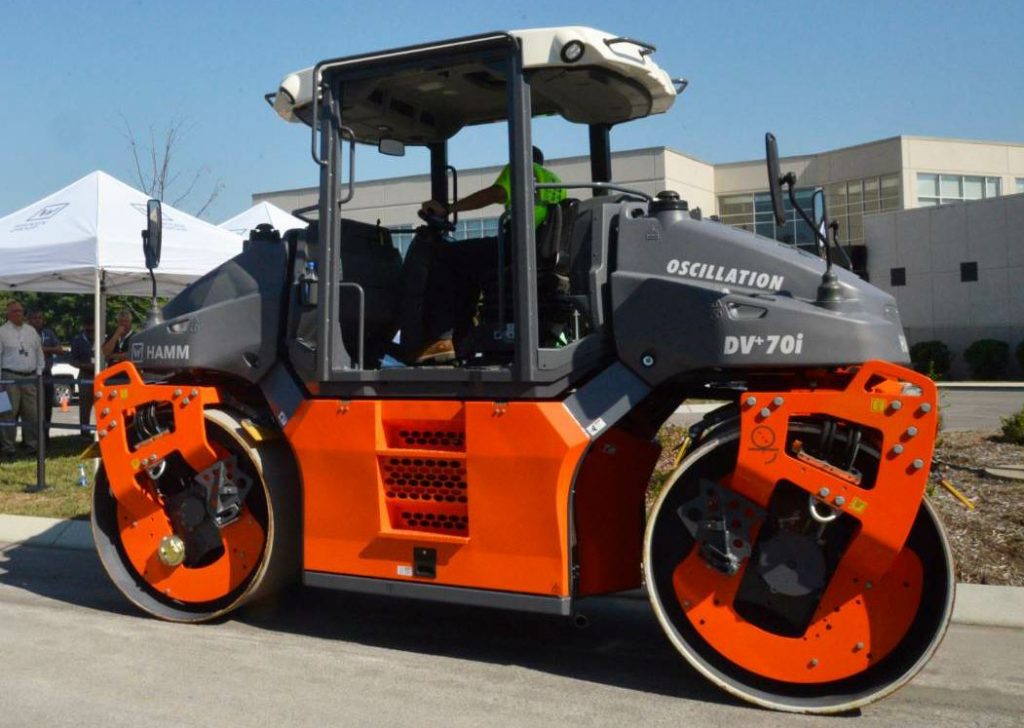
The DV+ 70i compactor from Hamm
Hamm, a division of Wirtgen Group, Antioch, Tennessee, offers the Hamm DV+ 70i compactor for the paving marketplace.
“Hamm’s innovative DV+ 90i series rigid-frame, drum-steer, split-drum asphalt compactor is available as the 9.9-ton DV+ 90i VV-S (vibration in both split drums), the DV+ 90i VO-S (vibration and oscillation in split drums), and DV+ 90i VT-S (vibration and pneumatic combi roller). The technology also is available as the DV+ 70i series, with models weighing 7.7 tons.”
“The standard split drums of the DV+ series feature vibration, and represent a further “plus” factor for quality. They ensure perfectly compacted asphalt layers, even in tight curves. There is also a very large turning angle, and the enormous track offset of the pivot steering allows the DV+ to be steered with great sensitivity in four different steering modes. With the DV+, asphalt pavements can be quickly compacted to a high standard because all components in these rollers are perfectly matched to one another. An important factor is the always evenly distributed weight of the DV+. This is due to the positioning of the engine in the center of the machine and the two-part water tank distributing the weight evenly in all operational states.”
Find specs here.
For more information, contact Matt Graves at (615) 501-0600 or matt.graves@wirtgen-group.com.
Hitek Equipment Inc.
Hitek Equipment Inc., Kenosha, Wisconsin, offers the Pavijet MiniPaver for pavement maintenance.
“The Pavijet MiniPavers are designed to be used for applications that are too small for a full-sized paver. Instead of doing these jobs by hand, the Pavijet MiniPavers reduce the need for manual labor while putting down more material in less time with a quality and consistent finish.”
“The compact size is the most impressive specification of the Pavijet MiniPaver. The Pavijet MiniPaver is a fully functional paving machine that has been scaled down to attach to a skid steer, allowing it to perform jobs and get into places that would be impossible for a full-sized paver. This enables users to do smaller patch or trench jobs with a machine, getting the job done faster and with less manual labor. Additionally, the Pavijet MiniPavers are easy to use and their compact size makes them easy to transport.”
Find specs here.
For more information, contact Shane Sommers at (262) 842-1700 or shane@askhitek.com.
John Deere
John Deere, Moline, Illinois, offers on-board grade indication as a factory or field kit option on select large-frame skid steers and compact track loaders.
“Our industry-exclusive on-board grade indication was designed to be an indispensable unit for applications like water drainage, general site prep and clearing work, allowing operators to accurately monitor and alter grades from the seat of the cab,” spokesperson Gregg Zupancic said. “This feature is intuitive and easy to use so operators can take advantage of this technology without specialized training.”
“The integrated on-board grade indication option provides operators with an accurate readout of the cross slope and main-fall slope of the machine. The information is displayed in real time through the machine’s main display monitor. The readout can be configured to display either percentage or degrees depending on preference.”
Find specs here.
For more information, contact your local John Deere dealer.
KM International
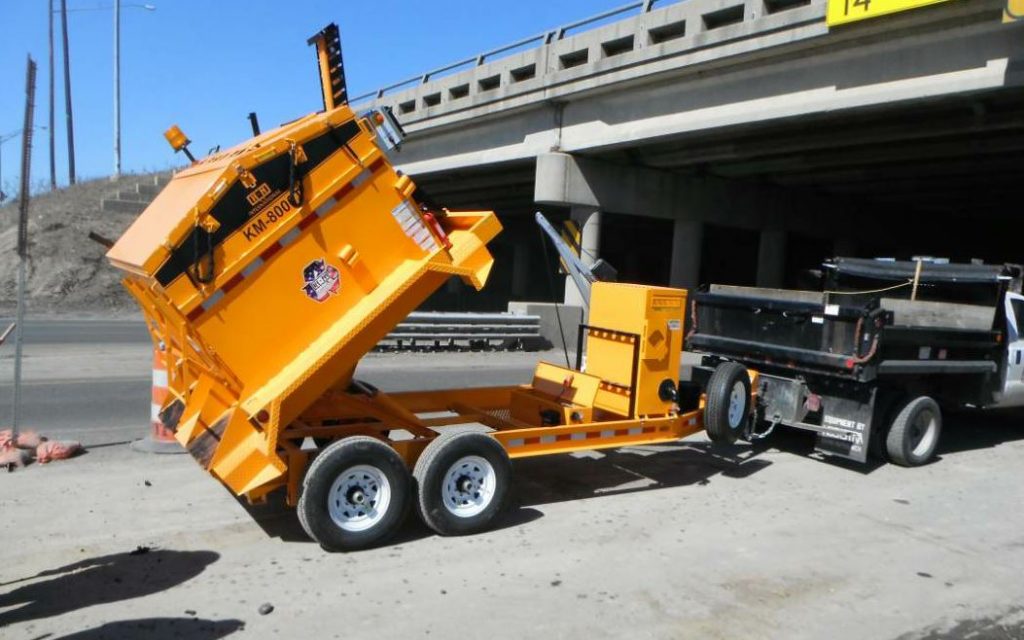
The KM 8000T asphalt hotbox reclaimer from KM International
KM International, North Branch, Michigan, offers the KM 8000T asphalt hotbox reclaimer for pavement maintenance.
“The KM 8000T maintains asphalt temperature for patching for up to two days. It also can reheat virgin asphalt back to its original temperature and consistency after it has cooled.”
“The most important specification is the fact it is thermostatically controlled. Being thermostatically controlled means the user can set the temperature they want the mix to be and the hotbox will automatically monitor the temperature and re-engage the burner anytime it falls below the setpoint.”
Find specs here.
For more information, contact Michael Blake at (800) 492-1757 or mblake@kminternational.com.
LeeBoy
LeeBoy, Lincolnton, North Carolina, offers the LeeBoy 6150 asphalt paver for paving.
“The LeeBoy 6150 is built to perform pavement maintenance as it is built on rubber tire with a quick travel speed. It is also very maneuverable, which enables it to make repairs in the smallest of places. The infinite variable paving widths can make any patch or complete lane paving. It can also push trucks to further help compliment any project.”
“The LeeBoy 6150’s best spec offering is the adjustable operator platform that allows the paver to be driven from a higher position while allowing two other operators to help run functions on the paver and screed. The console can also be lowered to allow the operator to operate one side of the screed to make the paving operation a two-man machine. In addition, the electric screed makes the unit a lot easier to heat the screed, which results in quicker paving temperatures.”
Find specs here.
For more information, contact Bryce Davis at (704) 966-3300 or bdavis@leeboy.com.
Neal Manufacturing
Neal Manufacturing, a division of Blastcrete Equipment LLC, Anniston, Alabama, offers its Asphalt Road Preservation Package for pavement preservation.
“The package includes Neal Manufacturing’s drivable DA 350 dual applicator for quick prep work and sealcoating around curbs and gutter, and its high-volume road maintenance vehicle that delivers high material output for efficiency on large projects. The DA 350 is a three-wheeled self-propelled sealcoating machine that features a built-in, high-powered blower and AutoTrim, an automatic cutting-in attachment. The high-volume road maintenance vehicle features Neal Manufacturing’s Generation IV pump to deliver infinitely variable outputs from 0-150 gpm, even with larger aggregate mixes.”
Find specs here.
For more information, contact (770) 830-1282 or eric@nealequip.com.
Pelican Products Inc.
Pelican Products Inc., Torrance, California, offers the Pelican™ 9600 LED modular light.
“With an optimized, elliptical beam pattern, the 9600 LED modular light is designed to cover work areas to a recommended health and safety executive output of more than 350 yards when deployed in a linked linear light series. The light is engineered for up to 17 consecutive units to run on a single 110v generator outlet to illuminate long, linear work sites to create a daylight effect.”
“Key features include: connect multiple light heads from one power source; 3,000 lumens per light head; extendable stand system up to 10 feet; stackable; adjustable/tilting light management; optimized elliptical LED optic to reduce ‘dark spots’; light bar shock absorbers for impact protection; 14 LEDs per light head; and additional pole, base and cable accessories available.”
Find specs here.
PSS
PSS, Cleveland, Ohio, offers the RoadQuake RAPTOR Rumble Strip Handling Machine for pavement maintenance.
“RAPTOR deploys, retrieves, and aligns RoadQuake 2F Temporary Portable Rumble Strips (TPRS). RoadQuake TPRS are designed to reduce accidents and save lives by alerting distracted drivers to changing road conditions, including work zones. With the use of RAPTOR, workers stay out of the road during pavement maintenance and preservation operations.”
“RAPTOR allows workers to deploy and retrieve TPRS from the safety of the vehicle, keeping them out of live traffic. With a capacity of 12 TPRS, RAPTOR is ideal for short-duration, short-term, and mobile operations. RAPTOR includes two cameras and an easy-to-use remote control.”
Find specs here.
For more information, contact David McKee at (216) 403-0898 or David.McKee@pss-innovations.com.
Rhumbix
Rhumbix, San Francisco, offers a system update for its Android application that provides field collection data and sharing.
“Rhumbix initially built its Field Intelligence Plaftorm™ on the iOS mobile operating system. With the inclusion of the Android platform, now available in the Google Play Store, any mobile device now provides intuitive user operation while maintaining real-time data delivery to project stakeholders. The result is designed to be a one size fits all digital solution for general contractors, subcontractors and owners by offering one tool to collect field-level data from timekeeping to fieldwork orders and more.”
Find specs here.
Roadtec Inc.
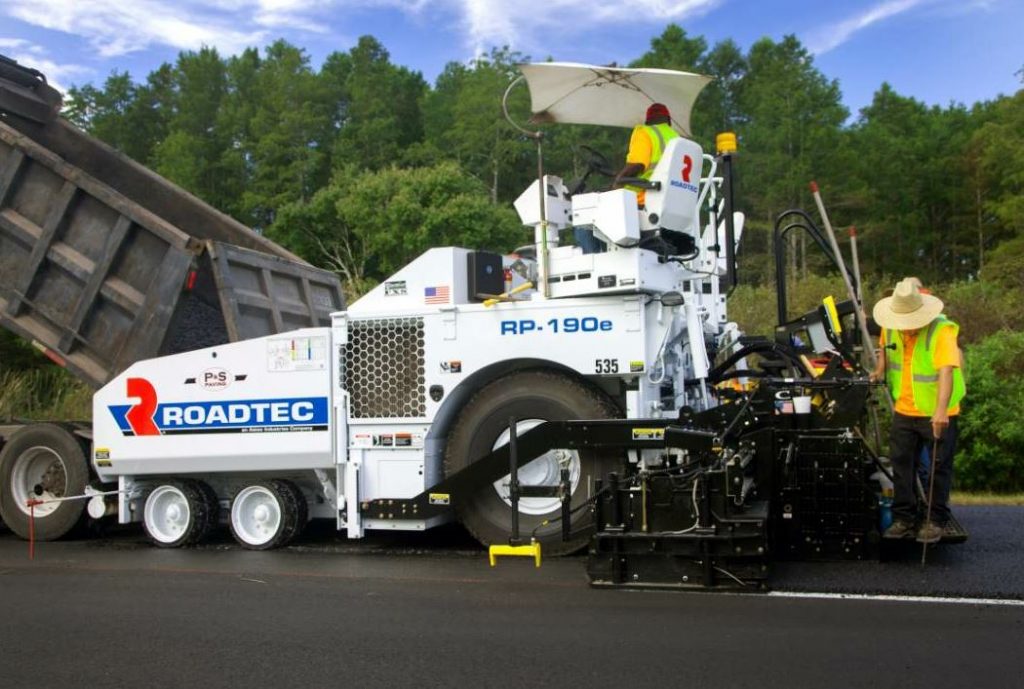
The R-190e features Roadtec’s exclusive anti-segregation design of the feed tunnel, the feed tunnel discharge and the rear augers.
Roadtec Inc., Chattanooga, offers the Roadtec RP-190e for paving.
“The RP-190e is the paver in the paving train. It is a powerful paver made for highway work. Seats of the dual operator stations move hydraulically out beyond the sides of the machine to provide excellent visibility.”
“Flow gates are crucial to the best possible paving and the RP-190e’s electric flow gates allow precise control over the head of material. Being able to control the head of material allows the paving crew to distribute material properly. Flow gates…help prevent the auger from being buried. Flow gates also keep the amount of material from coming back on the conveyor constant, and as low as possible. The RP-190e’s flow gate positions can be constantly monitored via every control box. Managing a consistent head of material is the most important factor in ride. Simply put, flow gates contribute to paving quality.”
Find specs here.
For more information, visit Roadtec’s website to find your local rep.
Vogele
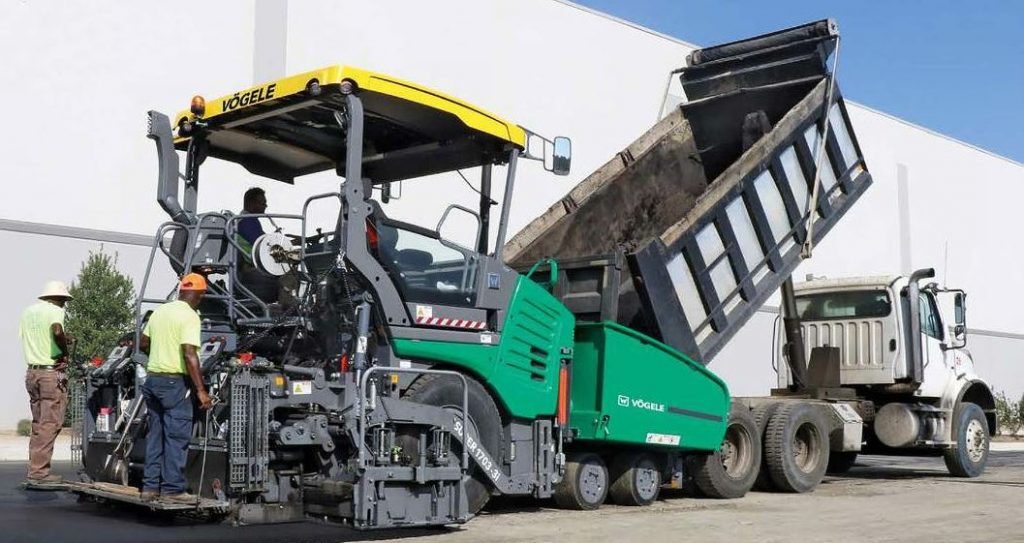
The Super 1703-3i from Vogele
Vogele, a division of Wirtgen Group, Antioch, Tennessee, offers the Vogele Super 1703-3i asphalt paver for the paving marketplace.
“With their strong performance and a uniquely compact design, the Vögele 8-ft. Super 1700-3i tracked and Super 1703-3i wheeled pavers put their owners at the forefront of technology in this field. They integrate the practical features that make the “Dash 3” generation, including the intuitive and easy-to-use ErgoPlus 3 operating system.”
“These new 8-ft. pavers — when combined with Vögele front-mounted extending screed and hydraulic bolt-on extensions — can pave at a maximum 19 ft. 6 in. (5.95 m). High performance, even when operating at this maximum paving width, is provided by a liquid-cooled 4-cylinder Cummins diesel engine, which even functions reliably under extreme climate conditions. The engine has an output of 173 hp (129 kW) at 2,000 rpm. When working in ECO mode, which is sufficient for most applications, the engine runs at a maximum of 1,700 rpm, further reducing noise emissions and fuel consumption.”
Find specs here.
For more information, contact Matt Graves at (615) 501-0600 or matt.graves@wirtgen-group.com.
Willow Designs
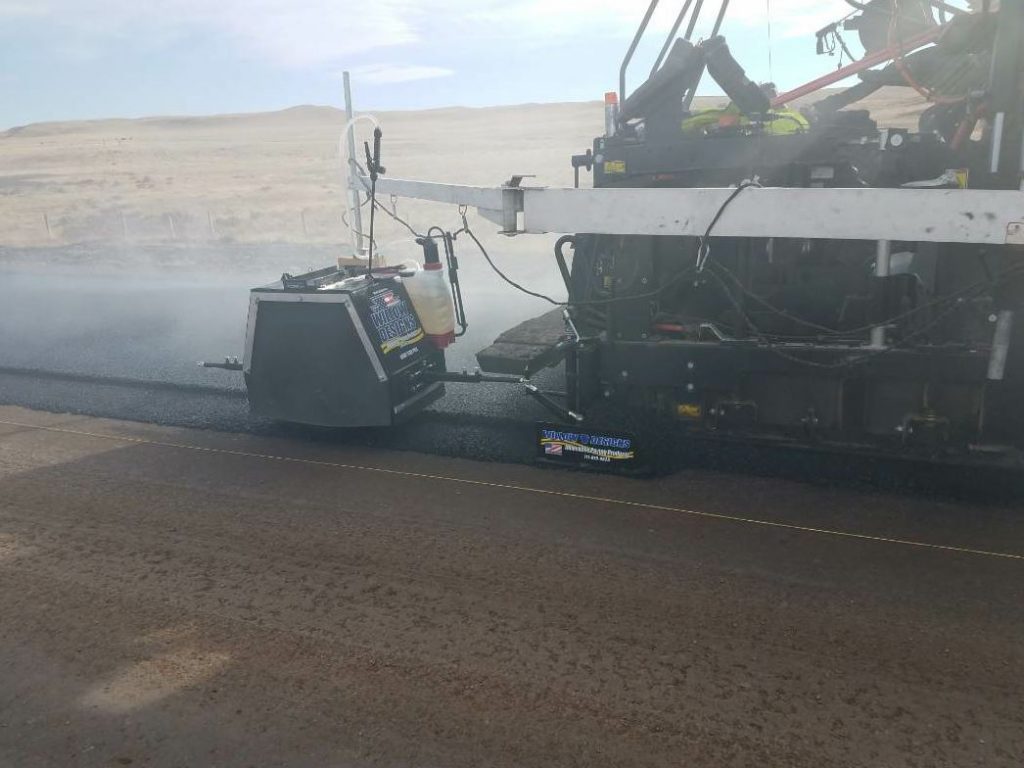
The notch wedge & pneumatic roller system from Willow Designs
Willow Designs, East Berlin, Pennsylvania, offers the Notch Wedge & Pneumatic Roller System for paving.
“Building best longitudinal asphalt joints: Notch Wedge and Pneumatic Roller connects directly to the paver to build the notch wedge joint or “Michigan joint”. Joint density are easily achieved with the addition of the Notch Wedge Pneumatic Roller, consistently joint density results are equivalent to mainline mat density results.”
“Joint Density: Here at Willow Designs in the last 3 years we have perfected longitudinal joint construction in asphalt pavement whether it be hot, warm, or cold asphalt longitudinal joints in wearing or base courses. There are numerous clients across the country using these systems to meet joint density specifications on DOT highways and FAA projects.”
Find specs here.
For more information, contact Jerod Willow at (717) 919-9828 or jerodwillowdesigns@gmail.com.
Wirtgen Group
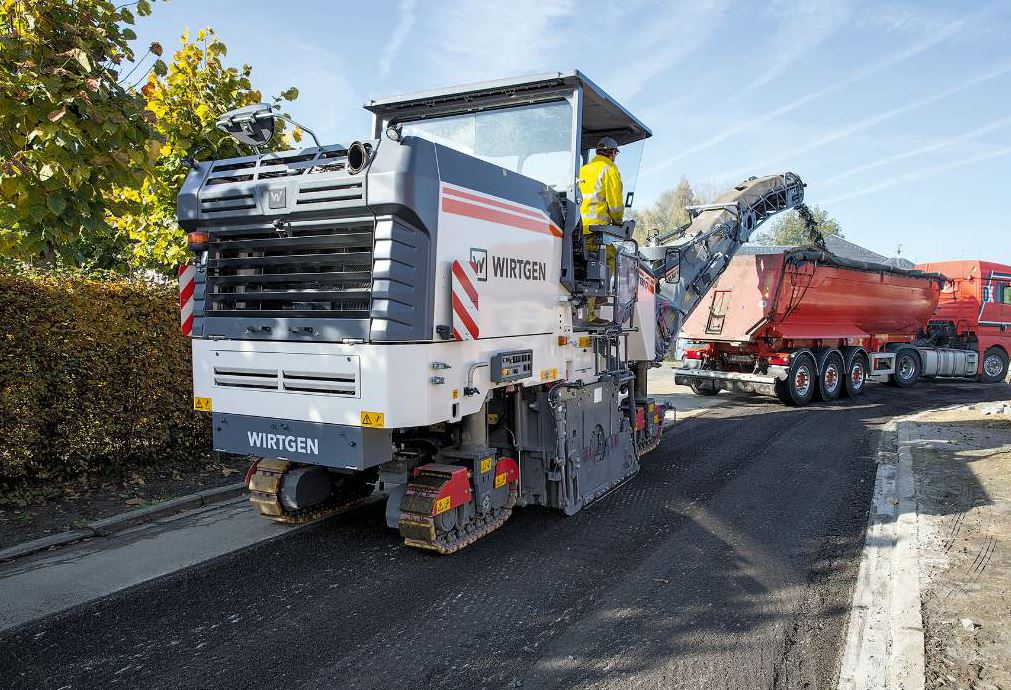
The W 150 CFi cold mill from Wirtgen Group
Wirtgen Group, Antioch, Tennessee, offers the Wirtgen W 150 CFi for the paving marketplace.
“The W 150 CFi is the most powerful cold mill in Wirtgen’s compact class, and is suitable for removing pavements on tight sites such as in cities or suburbs. Its Flexible Cutter System (FCS) enables milling drums with a working width between 23.6 inches and 4 feet 11 inches to be easily interchanged, up to 13 inches cutting depth.”
“The low weight of the W 150 CFi cold mill, and its centrally positioned milling unit, ensure optimal weight distribution. To optimize material loading, the particularly large slewing angle and speed of the front-loading conveyor can be adjusted. It has large steering angles for small turning radii, with highly precise positioning via fingertip steering integrated in a multifunctional armrest. Milling depth measurement is via displacement sensors integrated in the hydraulic side plate cylinders. Its modern machine control system—with the LEVEL PRO PLUS leveling system, as well as its intuitive operating concept—make efficient one-man operation possible.”
Find specs here.
For more information, contact Matt Graves at (615) 501-0600 or matt.graves@wirtgen-group.com.
